Follow
The Scramble for Africa began with the Berlin Conference (1884–85) and ended by the early twentieth century. During this period, European colonizers partitioned Africa into spheres of influence, colonies, and various segments. They partitioned land from European capitals, with limited knowledge of the geography, history, and ethnic composition of Africa. In many African countries, a significant portion of their population belongs to groups split by colonial partitions.
During the onset of colonization, European powers preferentially dealt with African local leaders and chieftaincies. Colonial powers employed underhand mechanisms in territorial acquisition and boundary making such as deceit, fraud, intimidation, and bribery. Moreover, colonial powers utilized various techniques to influence African leaders and obtain resource rich land.[1] The Berlin Conference legitimized the partition of Africa; colonialists designed regional maps without providing any notification to the local African rulers, and made treaties among colonial powers to avoid resource competition. However, many errors were made due to their superficial knowledge of the continent and undeveloped maps in existence.
Lord Salisbury, the British Prime Minister in 1906, demonstrated this arbitrary and under-informed approach at the signing of the Anglo-French convention on the Nigeria-Niger boundary in 1906, when he said: “We [the British and the French] have been engaged in drawing lines upon maps were no white man’s foot ever trod: we have been giving away mountains and rivers and lakes to each other, only hindered by the small impediments that we never knew exactly where the mountains and rivers and lakes were.”[2] This statement helps us to understand how colonial powers designed artificial African boundaries without knowledge of the land and local communities.
European powers completed cartographic surveys of territories through boundary commissions from 1900-1930, which allowed total control of colonies. However, these focused solely on land control and disregarded the impacts of partitioning on ethnic groups. Artificial borders split many closely related ethnic groups into different colonial regions. In the Horn of Africa, for instance, they split Somalis into French Somaliland, British Somalia, Italian Somalia, Ethiopian Somalia, and the Somali region of northern Kenya. Such colonial borders have massive effects on Somali people who share a common culture, a similar way of life, and the same religion, but live as separate citizens of Ethiopia, Djibouti, and Kenya. Similarly, the Afar people of Ethiopia were split amongst Ethiopia, Eritrea, and Djibouti, and the Anyuaa and Nuer were split between Ethiopia and South Sudan.
Following artificial border designs, African communities could not move freely in their daily activities and nomadic practices, which inflicted economic hardship and social inconvenience. Changing the lifestyle and structural systems of African communities negatively affected their traditional life, administrative structures, and economic well-being. This deprived African borderland communities of economic opportunity by hindering their movements, and forcing them to live differently than their traditional life. For example, many Africans are pastoralist and nomadic people that need vast land for grazing and water. However, artificial borders limited borderland people to herding on limited land and forced them into resource competition and confrontation due to limited mobility with other borderland peoples.
Besides improperly designed borders, European colonial powers employed “divide and rule,” “direct rule,” and “assimilation” policies, which forced the loss of social norms, identity, and social order for Africans. Moreover, these policies instigated conflicts among local people, dividing them even further, and consequently strengthening colonial power. Doing so helped gradually develop hostile relations among borderland people, and post-independent African governments and political elites used this division for political means. Some political elites in Africa affiliate more along ethnic lines, and play crucial roles in fueling tensions and escalating political disenfranchisement. For instance, the Lou-Nuer of South Sudan and the Jikany-Nuer of Ethiopia are the same ethnic group, and live along the Ethiopia-South Sudan border, yet they are considered as two distinct ethnic groups with different nationalities and have developed hostility through resource competition. Despite the effects of colonization and artificial borders on borderland communities, African political leaders have not alleviated these problems but rather used them as political instruments.
Improper border design and the partitioning of ethnic groups have contributed to underdevelopment, and instability in African states. In addition, the disconnect between center-periphery relation demonstrated by the exclusion by some. African states of borderland communities in economic development exacerbate the challenges. The lack of economic, social, and political development and limited upward mobility expose the borderland communities to a number of human security problems, including widespread poverty, lack of infrastructure, limited education, and cross-border intergroup conflicts. The improper design of African borders and use of these designs as political instruments have increased instability and underdevelopment for borderland communities across the continent.
Tasew Gashaw is a current Southern Voices Scholar Network for Peacebuilding.
[1] Jeffrey Herbst, “The Creation and Maintenance of National Boundaries in Africa,” (International Organization, 43, no. 4, 1989), 673-92.
[2] Lord Salisbury quoted in Anene, J.C, The International Boundaries of Nigeria, 1885-1960 (London, The Framework of an Emergent African Nation, Longman Press, 1970), 3.







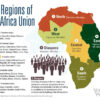

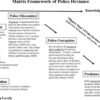
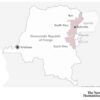

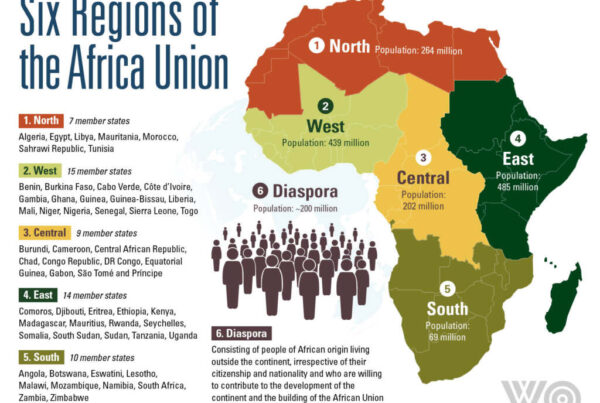

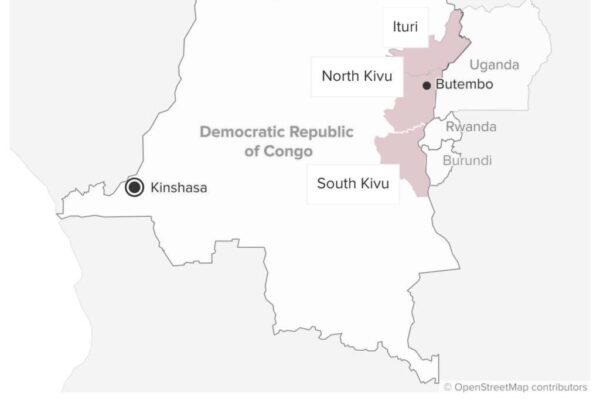

My name’s Eric and I just came across your website – expatise.blog – in the search results.
Here’s what that means to me…
Your SEO’s working.
You’re getting eyeballs – mine at least.
Your content’s pretty good, wouldn’t change a thing.
BUT…
Eyeballs don’t pay the bills.
CUSTOMERS do.
And studies show that 7 out of 10 visitors to a site like expatise.blog will drop by, take a gander, and then head for the hills without doing anything else.
It’s like they never were even there.
You can fix this.
You can make it super-simple for them to raise their hand, say, “okay, let’s talk” without requiring them to even pull their cell phone from their pocket… thanks to Talk With Web Visitor.
Talk With Web Visitor is a software widget that sits on your site, ready and waiting to capture any visitor’s Name, Email address and Phone Number. It lets you know immediately – so you can talk to that lead immediately… without delay… BEFORE they head for those hills.
CLICK HERE https://talkwithwebvisitors.com to try out a Live Demo with Talk With Web Visitor now to see exactly how it works.
Now it’s also true that when reaching out to hot leads, you MUST act fast – the difference between contacting someone within 5 minutes versus 30 minutes later is huge – like 100 times better!
That’s what makes our new SMS Text With Lead feature so powerful… you’ve got their phone number, so now you can start a text message (SMS) conversation with them… so even if they don’t take you up on your offer right away, you continue to text them new offers, new content, and new reasons to do business with you.
This could change everything for you and your business.
CLICK HERE https://talkwithwebvisitors.com to learn more about everything Talk With Web Visitor can do and start turing eyeballs into money.
Eric
PS: Talk With Web Visitor offers a FREE 14 days trial – you could be converting up to 100x more leads immediately!
It even includes International Long Distance Calling.
Paying customers are out there waiting.
Starting connecting today by CLICKING HERE https://talkwithwebvisitors.com to try Talk With Web Visitor now.
If you’d like to unsubscribe click here http://talkwithwebvisitors.com/unsubscribe.aspx?d=expatise.blog
Hey, my name’s Eric and for just a second, imagine this…
– Someone does a search and winds up at expatise.blog.
– They hang out for a minute to check it out. “I’m interested… but… maybe…”
– And then they hit the back button and check out the other search results instead.
– Bottom line – you got an eyeball, but nothing else to show for it.
– There they go.
This isn’t really your fault – it happens a LOT – studies show 7 out of 10 visitors to any site disappear without leaving a trace.
But you CAN fix that.
Talk With Web Visitor is a software widget that’s works on your site, ready to capture any visitor’s Name, Email address and Phone Number. It lets you know right then and there – enabling you to call that lead while they’re literally looking over your site.
CLICK HERE http://www.talkwithcustomer.com to try out a Live Demo with Talk With Web Visitor now to see exactly how it works.
Time is money when it comes to connecting with leads – the difference between contacting someone within 5 minutes versus 30 minutes later can be huge – like 100 times better!
Plus, now that you have their phone number, with our new SMS Text With Lead feature you can automatically start a text (SMS) conversation… so even if you don’t close a deal then, you can follow up with text messages for new offers, content links, even just “how you doing?” notes to build a relationship.
Strong stuff.
CLICK HERE http://www.talkwithcustomer.com to discover what Talk With Web Visitor can do for your business.
You could be converting up to 100X more leads today!
Eric
PS: Talk With Web Visitor offers a FREE 14 days trial – and it even includes International Long Distance Calling.
You have customers waiting to talk with you right now… don’t keep them waiting.
CLICK HERE http://www.talkwithcustomer.com to try Talk With Web Visitor now.
If you’d like to unsubscribe click here http://talkwithcustomer.com/unsubscribe.aspx?d=expatise.blog
My name’s Eric and I just found your site expatise.blog.
It’s got a lot going for it, but here’s an idea to make it even MORE effective.
Talk With Web Visitor – CLICK HERE http://www.talkwithcustomer.com for a live demo now.
Talk With Web Visitor is a software widget that’s works on your site, ready to capture any visitor’s Name, Email address and Phone Number. It signals you the moment they let you know they’re interested – so that you can talk to that lead while they’re literally looking over your site.
And once you’ve captured their phone number, with our new SMS Text With Lead feature, you can automatically start a text (SMS) conversation… and if they don’t take you up on your offer then, you can follow up with text messages for new offers, content links, even just “how you doing?” notes to build a relationship.
CLICK HERE http://www.talkwithcustomer.com to discover what Talk With Web Visitor can do for your business.
The difference between contacting someone within 5 minutes versus a half-hour means you could be converting up to 100X more leads today!
Eric
PS: Studies show that 70% of a site’s visitors disappear and are gone forever after just a moment. Don’t keep losing them.
Talk With Web Visitor offers a FREE 14 days trial – and it even includes International Long Distance Calling.
You have customers waiting to talk with you right now… don’t keep them waiting.
CLICK HERE http://www.talkwithcustomer.com to try Talk With Web Visitor now.
If you’d like to unsubscribe click here http://talkwithcustomer.com/unsubscribe.aspx?d=expatise.blog
Hi, We are wondering if you would be interested in our service, where we can provide you with a dofollow link from Amazon (DA 96) back to expatise.blog?
The price is just $67 per link, via Paypal.
To explain what DA is and the benefit for your website, along with a sample of an existing link, please read here: https://pastelink.net/1nm60
If you’d be interested in learning more, reply to this email but please make sure you include the word INTERESTED in the subject line field, so we can get to your reply sooner.
Kind Regards,
Claudia